这篇文章主要为大家展示了“Android原生APP中如何添加ReactNative进行混合开发”,内容简而易懂,条理清晰,希望能够帮助大家解决疑惑,下面让小编带领大家一起研究并学习一下“Android原生APP中如何添加ReactNative进行混合开发”这篇文章吧。
集成步骤
参考官方文档->react native 文档
本文使用开发环境 Android studio
注意***的React Native支持的***的SDK为16(android4.1)
npm环境,小伙伴们自己安装 nodeJS自己安装,可以参考官方文档安装环境,有问题可以发411437734@qq.com沟通
创建Android项目(已有项目跳过)
1.打开Android studio
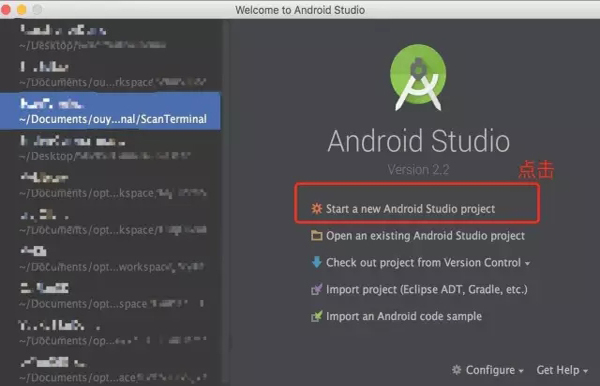
2.输入项目名称,选择项目目录,点击next
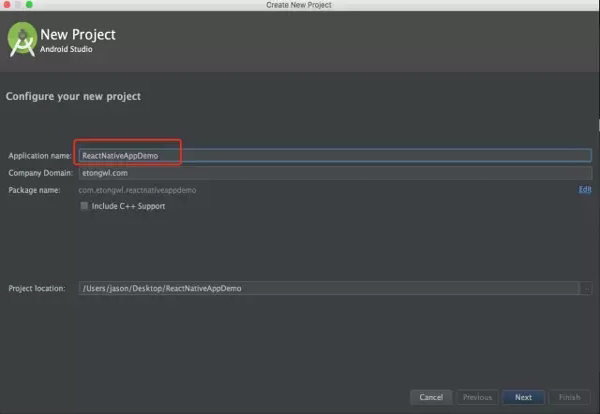
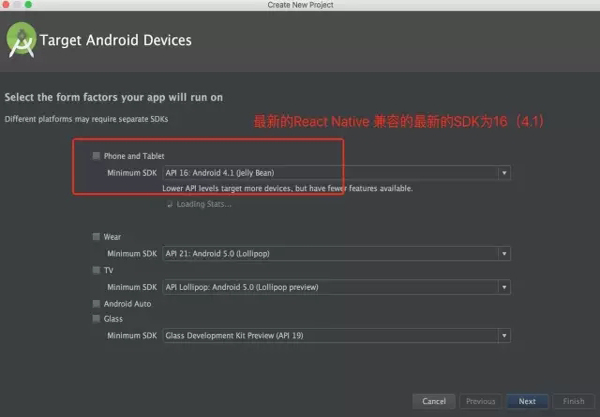
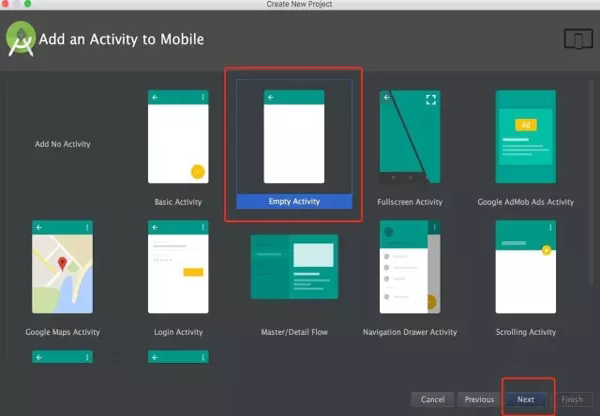
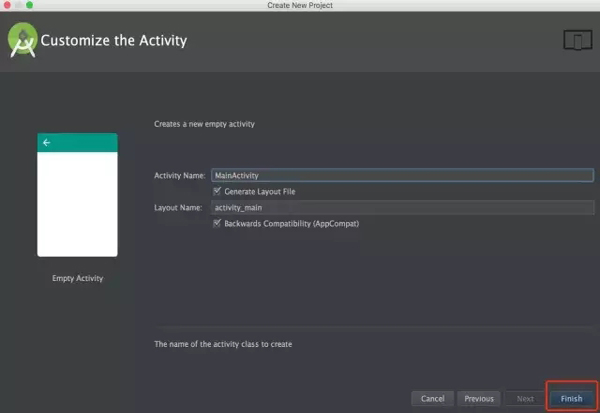
至此项目创建完成(需要注意的是***的React Native支持***SDK版本为16 android4.1)
React Native集成到上面我们创建的ReactNativeAPPDemo中
参考Facebook react native文档
1.进入项目根目录,添加JS到项目中-点击Android studio中的Terminal(如下图)
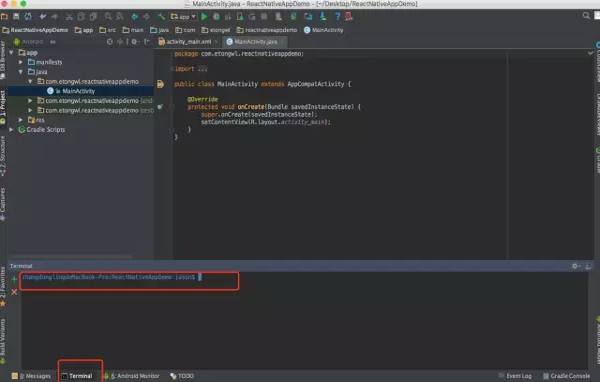
分别执行一下语句
npm init npm install --save react react-native curl -o .flowconfig https://raw.githubusercontent.com/facebook/react-native/master/.flowconfig
init 主要根据提醒生成package.json文件
install --save react react-native 安装React 和React Native
curl -o .flowconfig https://raw.githubusercontent.com/facebook/react-native/master/.flowconfig 下载.flowconfig文件
参考图片
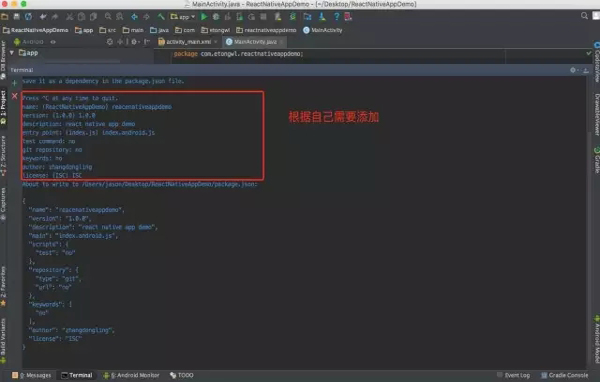
查看项目中有node_modules,说明react和react native 安装完成
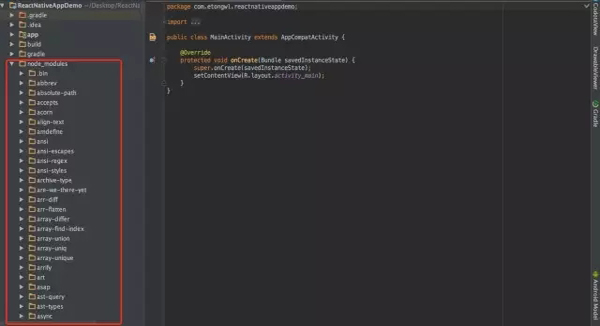
在项目根目录添加.flowconfig
参考下图
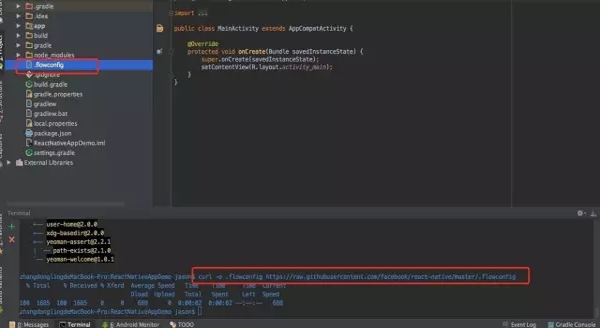
也可以手动创建在浏览器打开https://raw.githubusercontent.com/facebook/react-native/master/.flowconfig网址复制内容创建文件
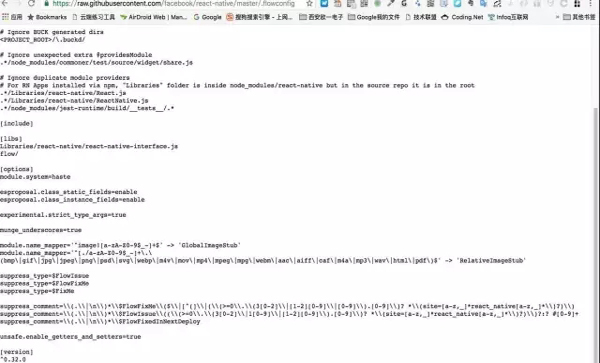
ReactNativeAppDemo配置相关内容
1.添加"start": "node node_modules/react-native/local-cli/cli.js start" 到package.json 文件下 scripts标签 修改前

修改后
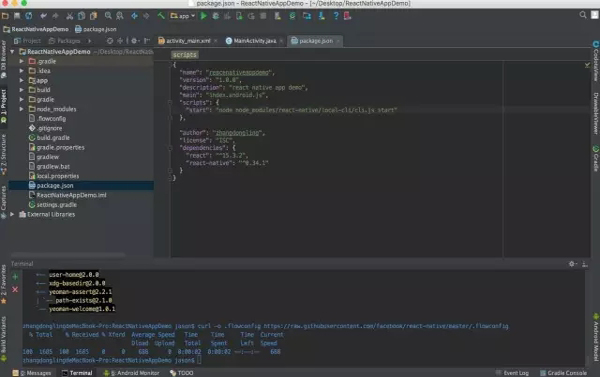
2.添加index.android.js文件到项目中
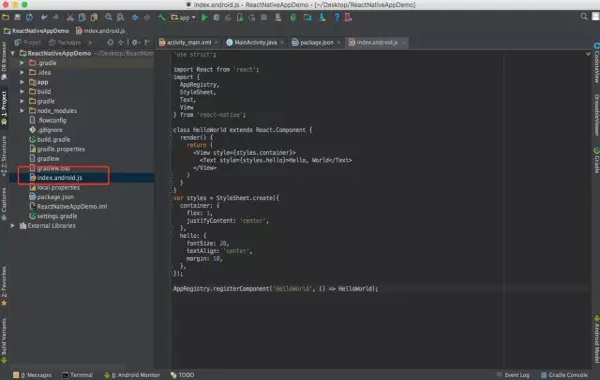
'use strict'; import React from 'react'; import { AppRegistry, StyleSheet, Text, View } from 'react-native'; class HelloWorld extends React.Component { render() { return ( <View style={styles.container}> <Text style={styles.hello}>Hello, World</Text> </View> ) } } var styles = StyleSheet.create({ container: { flex: 1, justifyContent: 'center', }, hello: { fontSize: 20, textAlign: 'center', margin: 10, }, }); AppRegistry.registerComponent('HelloWorld', () => HelloWorld);至此React native配置基本完成
3.App build.gradle配置
dependencies { ... compile "com.facebook.react:react-native:+" // From node_modules.}这里注意不要使用maven中的,因为我们使用的是我们本地node_modules中的,注意***版本中支持的是23,appcompat-v7:23.0.1,暂时没有试24的api
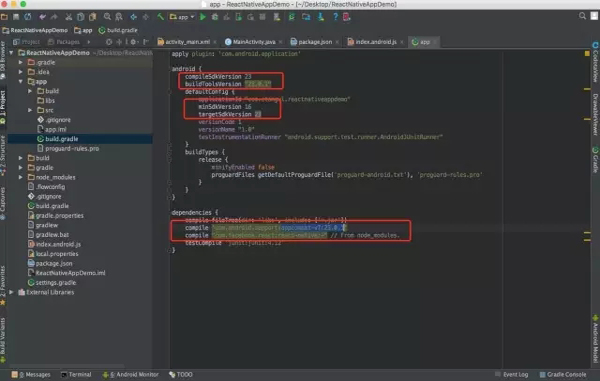
整个工程build.gradle配置
allprojects { repositories { ... maven { // All of React Native (JS, Android binaries) is installed from npm url "$rootDir/node_modules/react-native/android" } } ... }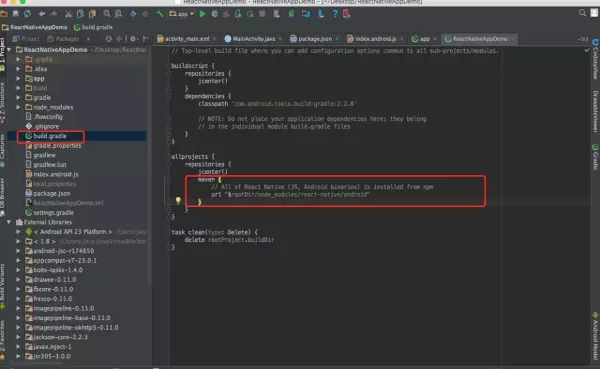
添加<uses-permission android:name="android.permission.INTERNET" />到AndroidManifest.xml:
确定External Libraries

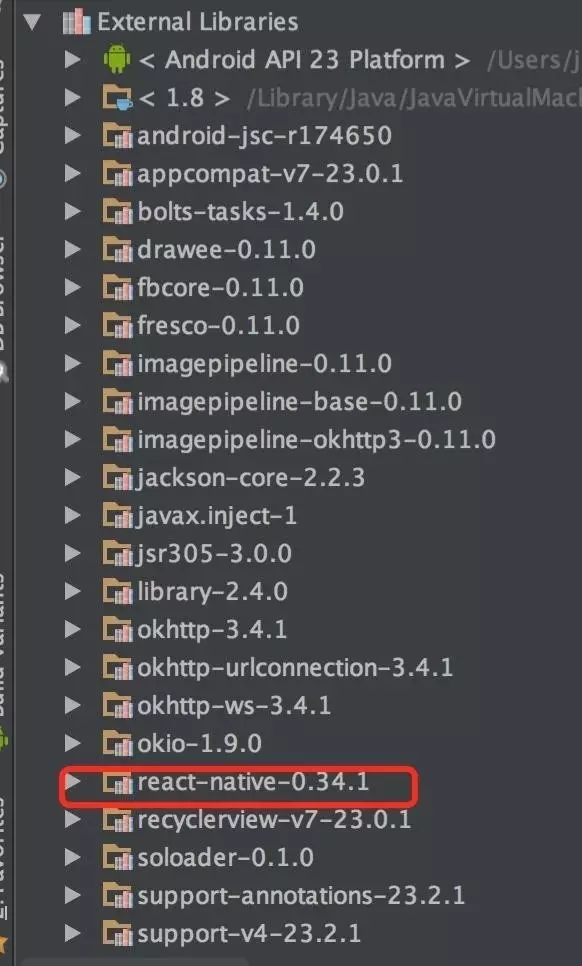
确定是下是***的,例如确定是0.34.1而不是0.20.1,如果出现请检查
maven { `url "$rootDir/../node_modules/react-native/android"`//地址是否正确 } 修改url "$rootDir*/..*/node_modules/react-native/android"为url "$rootDir/node_modules/react-native/android"添加native code
官方给出的
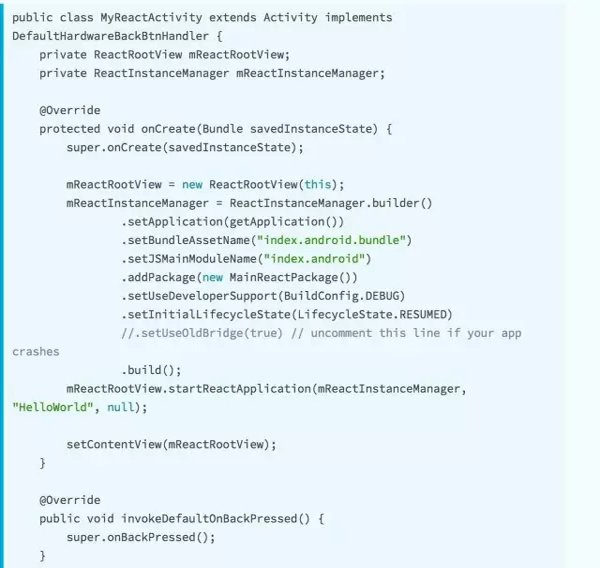
到时***版本中提供了更加简单的方式,没错就是继承。
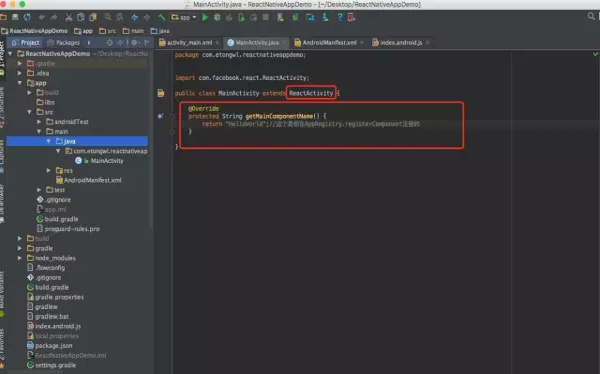
在这里我们也需要自定义一个Application否则 运行时会报错,不信的小伙伴可以试一试
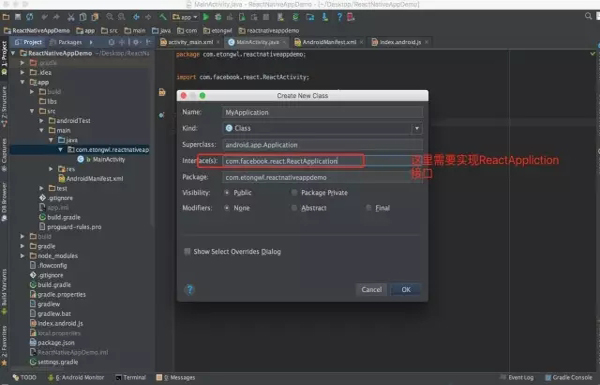
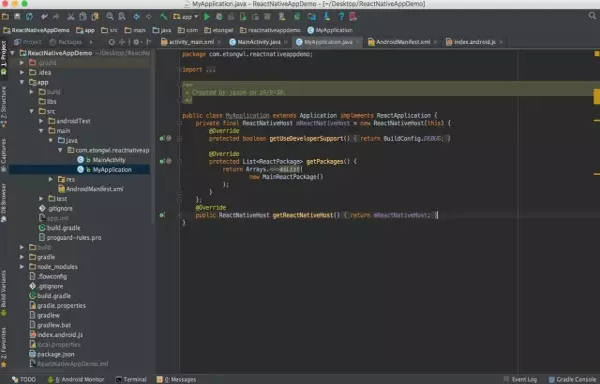
到此为止,ReactNative 集成到已有项目中完成!!!迫不及待的运行试试吧!!
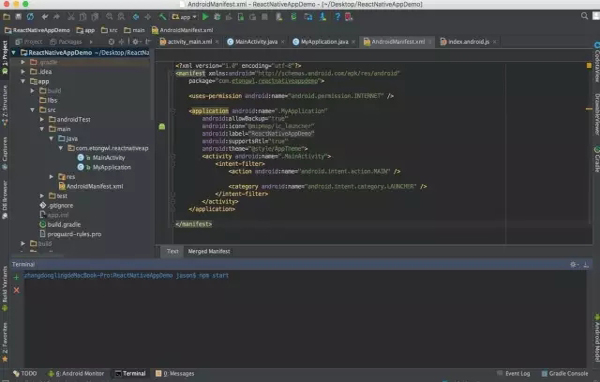
在Terminal中运行 npm start,看到下图表示启动成功
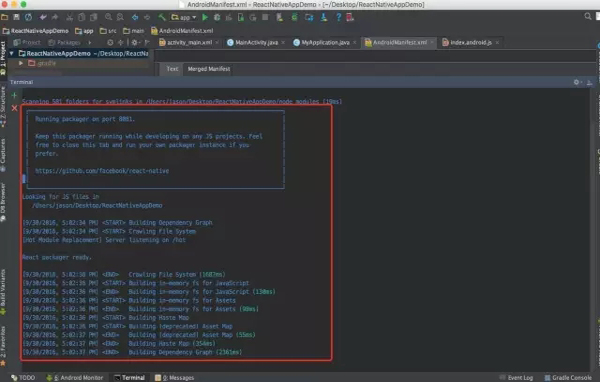
运行以后发现如下错误
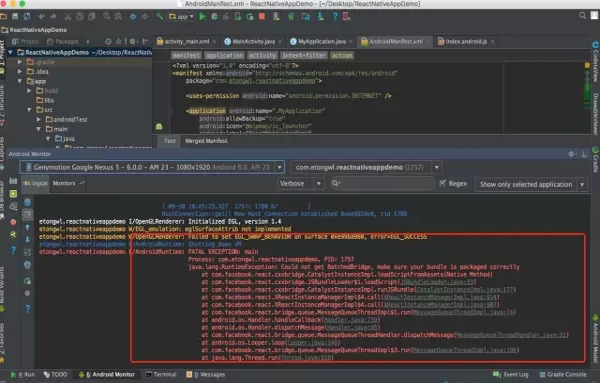
react-native报错:Could not get BatchedBridge, make sure your bundle is packaged correctly
莫紧张,这是因为bundle没有打包好。找不到编译打包后的js文件。其实就是android studio默认的寻找js文件地址和react-native自己的工具编译所使用的地址不同。
解决方法
方法一
进入项目,在android/app/src/main下新建assets目录。执行以下命令
$> react-native start > /dev/null 2>&1 & $> curl "http://localhost:8081/index.android.bundle?platform=android" -o > "app/src/main/assets/index.android.bundle"
在项目根目录下执行
<!--$> (cd android/ && ./gradlew assembleDebug)-->$> (cd 项目名称/ && ./gradlew assembleDebug)
把创建的apk安装到android设备
方法二
进入项目,在android/app/src/main下新建assets目录
启动服务器
$>react-native start $>react-native bundle --platform android --dev false --entry-file index.android.js --bundl
在assets文件夹下会生成index.android.bundle文件,把创建的apk文件安装到android设备
方法三
进入项目,在android/app/src/main下新建assets目录
在package.json中配置下面代码
"scripts": { "start": "node node_modules/react-native/local-cli/cli.js start", "bundle-android": "react-native bundle --platform android --dev false --entry-file index.android.js --bundle-output app/src/main/assets/index.android.bundle --sourcemap-output app/src/main/assets/index.android.map --assets-dest android/app/src/main/res/" },个人推荐使用方法三,方法三解决不了推荐方法二 手动执行
修改刚刚的package.json文件
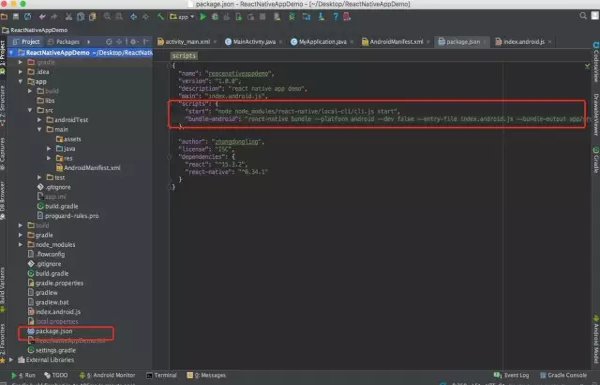
如果真机(模拟器)需要执行
adb reverse tcp:8081 tcp:8081
一定要确定连接网络哦!!
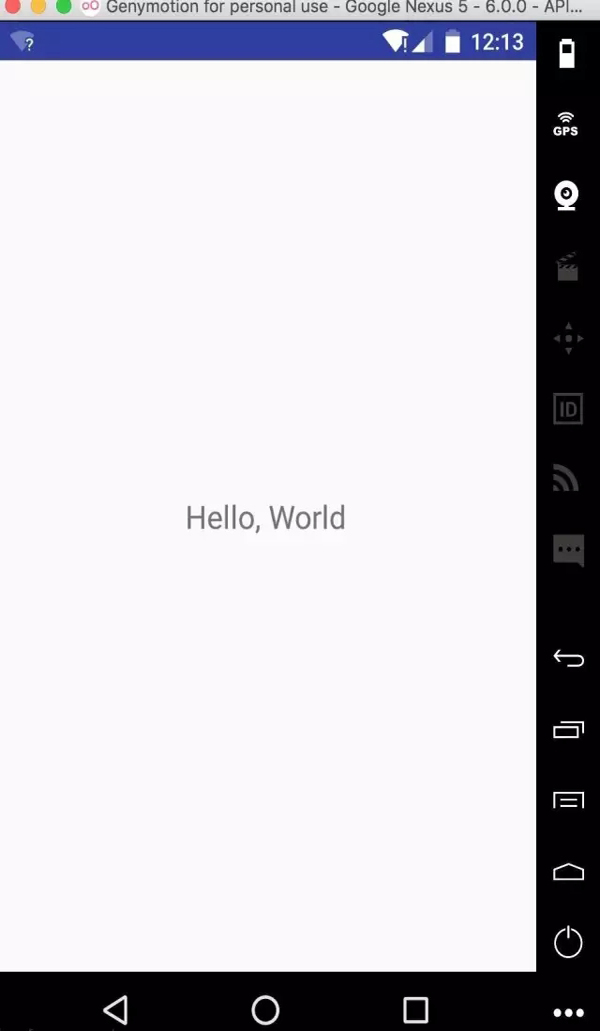
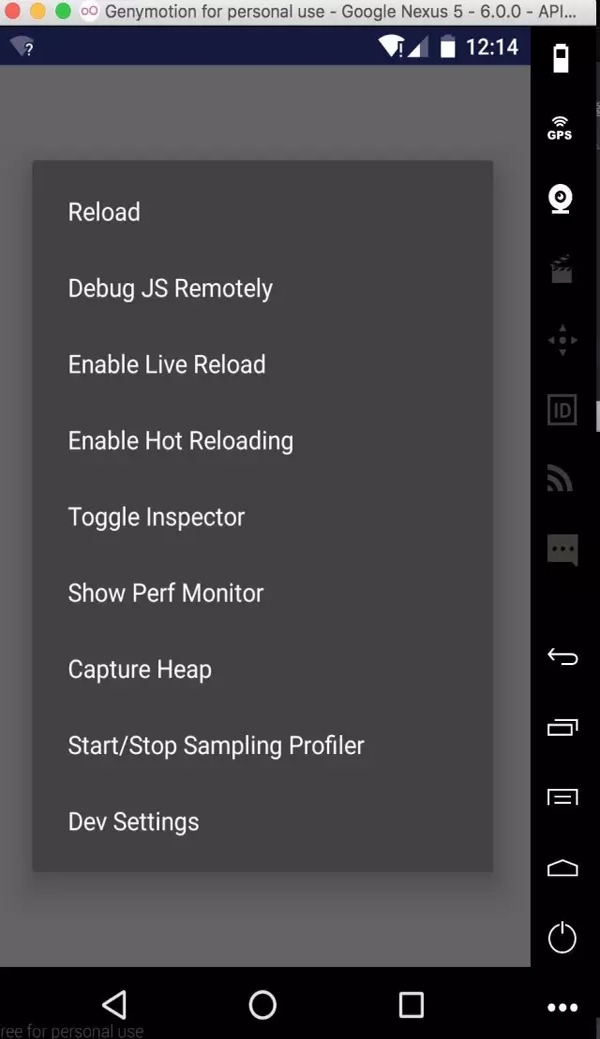
开心的进行开发吧!
其他可能遇到的问题
ReactNative兼容64位Android手机
libgnustl_shared.so" is 32-bit instead of 64-bit类似错误
解决方法
在项目的根目录的 gradle.properties 里面添加一行android.useDeprecatedNdk=true.
在 build.gradle 文件里添加以下代码
android { ... defaultConfig { ... ndk { abiFilters "armeabi-v7a", "x86" } packagingOptions { exclude "lib/arm64-v8abrealm-jni.so" } } }Genymotion模拟器运行显示没有连接到developement server如下图

先检查是否连接到网络
点击模拟器中Menu菜单弹出下面图片,点击Dev Settings

4.点击Debugging 下面的Debug Server host & port for device填写地址和端口
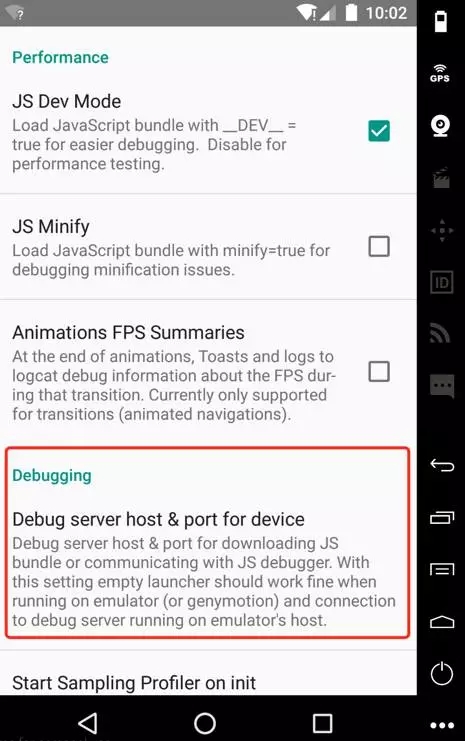

以上是“Android原生APP中如何添加ReactNative进行混合开发”这篇文章的所有内容,感谢各位的阅读!相信大家都有了一定的了解,希望分享的内容对大家有所帮助,如果还想学习更多知识,欢迎关注亿速云行业资讯频道!
免责声明:本站发布的内容(图片、视频和文字)以原创、转载和分享为主,文章观点不代表本网站立场,如果涉及侵权请联系站长邮箱:is@yisu.com进行举报,并提供相关证据,一经查实,将立刻删除涉嫌侵权内容。